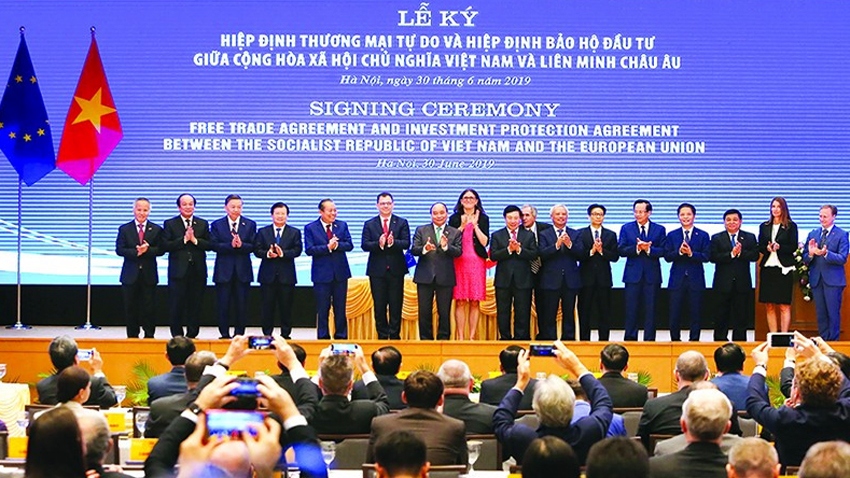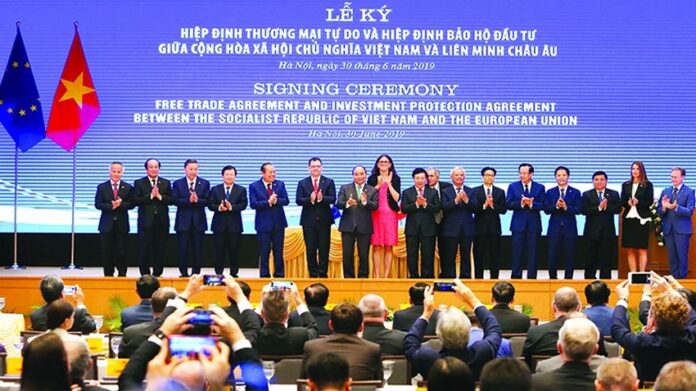Four years since the Vietnam-EU Free Trade Agreement (EVFTA) came into force on August 1, 2020, a recent survey by the European Business Association in Vietnam (EuroCham) reveals that the EVFTA has boosted Vietnam’s exports to Europe.
The EVFTA has propelled Vietnam’s exports to Europe from €35 billion in 2019 to over €48 billion in 2023. This growth is evident in sectors such as electronics, textiles, footwear, agriculture, and seafood.

Vietnam and the EU sign the EVFTA and IPA Agreements on June 30, in Hanoi – Photo: vlr.vn
However, the increase in EU exports to Vietnam was much more modest, rising from €11 billion to €11.4 billion during the same period, exacerbating the significant trade imbalance. The EVFTA has undoubtedly enhanced Vietnam’s appeal to European investors. The EU bloc, a major investor, has poured €28 billion into 2,450 projects, underscoring its confidence in Vietnam’s potential.
Notably, EU investors added €800 million in foreign direct investment during the period from January to September 2023, bucking the global downward FDI trend. Nevertheless, EuroCham’s Business Climate Index (BCI) survey highlights some obstacles European businesses face in maximizing the benefits of the EVFTA. These include complex legal requirements and local authorities’ non-recognition of international standards.
Additionally, a lack of understanding of the agreement among stakeholders, coupled with customs valuation and unclear clearance procedures, complicates trade. Technical barriers, particularly in product certification and testing, remain significant hurdles…
EuroCham Vietnam Chairman, Dominik Meichle, stated that while the EVFTA has undoubtedly created new opportunities for European businesses in Vietnam, challenges persist. As the two sides enter the fifth year of the agreement, it is crucial to continue streamlining procedures, harmonizing standards, and ensuring that everyone understands how the EVFTA works.






![[Photo Essay]: Experts, Managers, and Businesses Unite to Forge a Path Towards Sustainable Green Industry](https://xe.today/wp-content/uploads/2025/07/z678592918-150x150.jpg)


![[Photo Essay]: Experts, Managers, and Businesses Unite to Forge a Path Towards Sustainable Green Industry](https://xe.today/wp-content/uploads/2025/07/z678592918-100x70.jpg)






